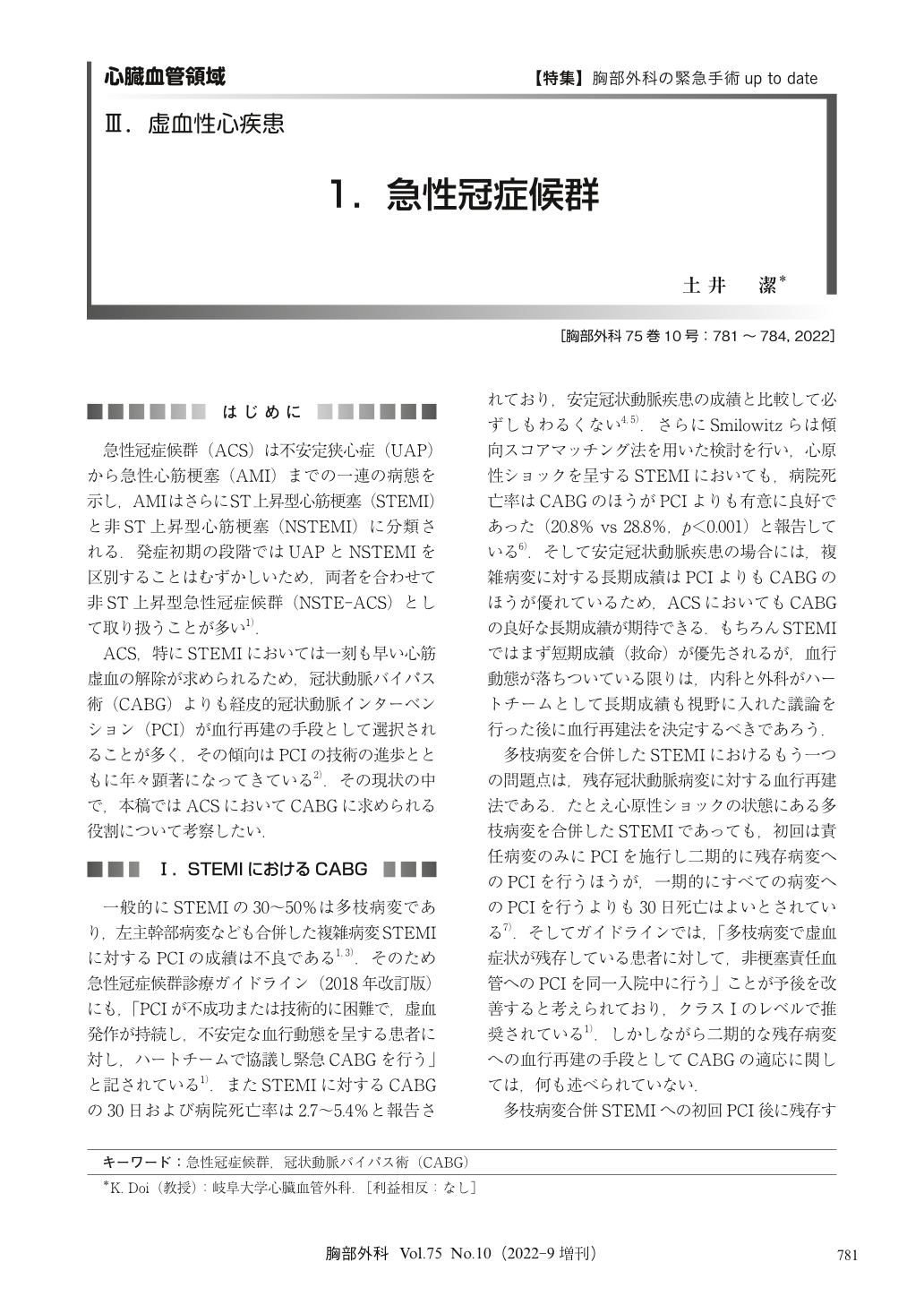Japanese
English
- 有料閲覧
- Abstract 文献概要
- 1ページ目 Look Inside
- 参考文献 Reference
急性冠症候群(ACS)は不安定狭心症(UAP)から急性心筋梗塞(AMI)までの一連の病態を示し,AMIはさらにST上昇型心筋梗塞(STEMI)と非ST上昇型心筋梗塞(NSTEMI)に分類される.発症初期の段階ではUAPとNSTEMIを区別することはむずかしいため,両者を合わせて非ST上昇型急性冠症候群(NSTE-ACS)として取り扱うことが多い1).
According to the current guidelines, patients who presented with acute coronary syndrome (ACS) are preferably treated with percutaneous coronary intervention (PCI) than with coronary artery bypass grafting (CABG). However, despite a higher success rate of complete revascularization especially for patients with multiple vessel disease, CABG seems to be underused after ACS. Recent studies comparing different revascularization strategies (PCI vs CABG) for ACS demonstrated that operative mortality after CABG was comparable to that after primary PCI. Furthermore, long-term survival rate of CABG was significantly better than that of PCI. Therefore, even when a hemodynamically unstable patient with ACS was admitted to hospital, the option of one-stage complete revascularization by CABG should be discussed by heart team.

© Nankodo Co., Ltd., 2022


